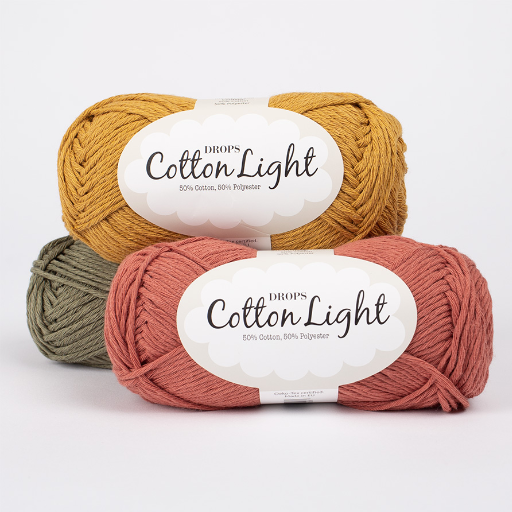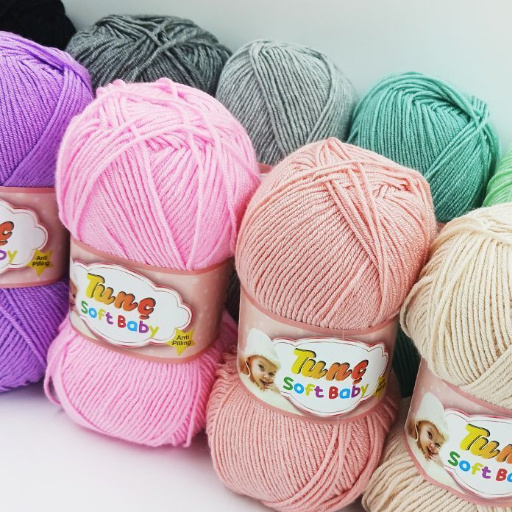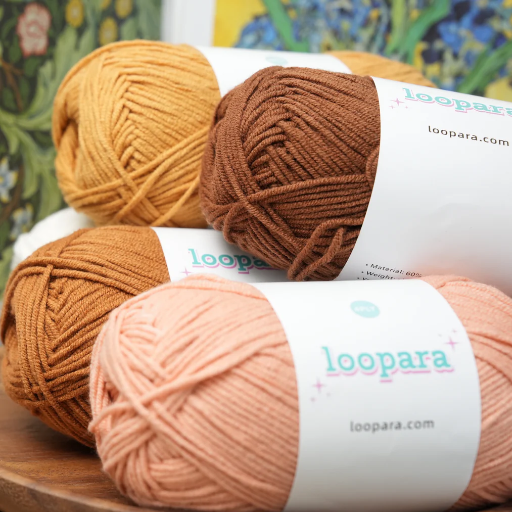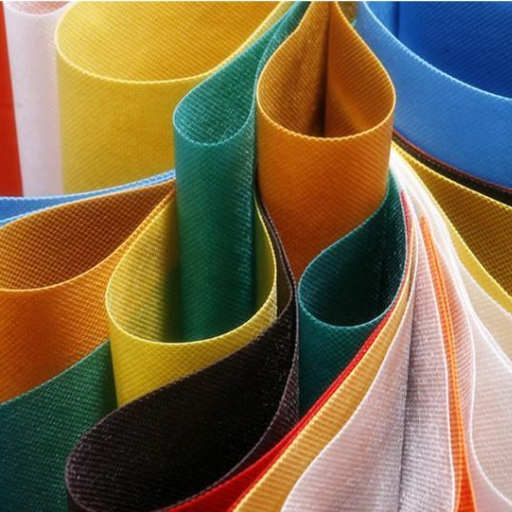Crocheting is a beloved craft that brings joy, creativity, and relaxation to countless enthusiasts. However, for individuals with arthritis, the repetitive motions and prolonged gripping can lead to discomfort or pain, potentially making this enjoyable hobby challenging. That’s where ergonomic crochet hooks come in—they are specifically designed to reduce strain on the hands and wrists, allowing crafters to pursue their passion comfortably and for longer periods. This blog post explores the best ergonomic crochet hooks on the market that cater to arthritic hands, highlighting their key features, benefits, and how they can improve your crafting experience. Whether you’re looking for soft grip handles, lightweight designs, or tools tailored to alleviate joint stress, this guide will provide all the information you need to choose the right crochet hook for your needs.
What makes a crochet hook ergonomic for people with arthritis?

Ergonomic crochet hooks are designed to reduce strain and provide comfort, making them ideal for people with arthritis. Key features include soft, non-slip handles that are thicker and shaped to fit comfortably in the hand, reducing the effort needed to grip. Lightweight materials, such as aluminum or resin, help minimize fatigue during extended use. Additionally, smooth hook surfaces ensure fluid motion through the yarn, preventing unnecessary friction and effort. These thoughtful design elements work together to alleviate joint stress and enhance the crocheting experience.
Key features of ergonomic crochet hooks
Ergonomic crochet hooks are specifically crafted to enhance comfort, reduce strain, and improve efficiency during crochet sessions. Their key benefits include:
Reduced Hand and Wrist Pain: The ergonomic design prevents cramping and fatigue by promoting a natural hand position, ideal for those with arthritis or repetitive strain injuries.
Better Grip and Control: Non-slip handles and contoured shapes ensure a secure grip, even during prolonged use, leading to smoother and more precise crocheting.
Improved Durability and Versatility: Made with high-quality materials, ergonomic crochet hooks are lightweight yet sturdy, offering compatibility with various yarn types and projects.
Ultimately, ergonomic crochet hooks foster a healthier, more enjoyable crafting experience, particularly for avid crafters or those who crochet frequently.
How ergonomic handles reduce hand pain
Ergonomic handles are specifically designed to reduce hand pain by alleviating strain on the muscles and joints during repetitive motions such as crocheting. Their soft, contoured shapes provide a comfortable, natural grip, minimizing tension in the hand and wrist. Unlike traditional hooks, ergonomic designs promote proper hand positioning, which can reduce the risk of tendon strain and conditions like carpal tunnel syndrome. Additionally, these handles evenly distribute pressure across the hand, preventing discomfort and fatigue, especially during extended crafting sessions. By supporting natural hand movements, ergonomic handles enhance both comfort and longevity in crocheting.
The importance of hook size and material
Hook size and material play a critical role in the outcome and enjoyment of any crochet project. The size of the hook determines the tightness or looseness of your stitches, directly impacting the texture and drape of the fabric. Larger hooks create looser, more flexible stitches, ideal for items like blankets or scarves, while smaller hooks produce tighter, more rigid stitches, suitable for intricate designs or amigurumi. Materials such as aluminum, plastic, bamboo, or steel also affect the crocheting experience. Lightweight materials like bamboo offer a warm, comfortable grip, while aluminum hooks glide smoothly through stitches, reducing friction. The choice of size and material should be tailored to the type of project, yarn thickness, and personal comfort to achieve the best results.
Which are the best crochet hooks for arthritic hands?

Crochet hooks for arthritic hands should be ergonomic, as these features are most beneficial. Such hooks customarily have grips made of soft rubber or molded handles that help reduce strain and make crocheting comfortable. Clover Amour and Furls Odyssey, alongside Tulip Etimo, are well-known brands that arthritis suffers prefer, as the hooks are lightweight and easy to use. Moreover, using larger sizes of the hook made from bamboo or lightweight aluminum can further reduce hand strain. In the end, a person must be willing to try several hooks until they find the most comfortable fit to ensure that they enjoy crocheting.
Top-rated ergonomic crochet hook sets
Clover Amour Crochet Hook Set
This highly-rated set features hooks with soft, rubberized grips designed for maximum comfort and ease of use. The hooks glide seamlessly through yarn, minimizing hand strain, especially during long crochet sessions. The set includes a range of hook sizes, making it versatile for various projects. Many crocheters praise its balance of affordability and ergonomic design.
Furls Odyssey Crochet Hook Set
Renowned for its luxurious design and superior comfort, this set is ideal for crocheters seeking premium-quality tools. The polished resin handles combine elegance with functionality, reducing wrist pain and providing excellent control. While on the higher end of the price spectrum, these hooks are a favorite among enthusiasts for their smooth, efficient performance.
Tulip Etimo Crochet Hook Set
Known for its sleek design and cushioned grips, the Tulip Etimo set is perfect for those with arthritis or repetitive strain concerns. The hooks are lightweight yet durable, offering precise stitching capabilities and reducing fatigue. Many users highlight its soft-touch handle and smooth transitions, which make crocheting more enjoyable.
These top-rated sets are tailored to different preferences and needs, making it essential to consider factors such as handle material, grip design, and price point when selecting the right ergonomic crochet hooks for you.
Clover Amour crochet hooks: A popular choice
Clover Amour crochet hooks have garnered widespread acclaim for their blend of comfort, precision, and user-friendly design. These hooks feature soft, non-slip elastomer handles that provide a firm yet gentle grip, reducing hand fatigue during extended crafting sessions. The smooth aluminum tips glide effortlessly through yarn, ensuring consistent and accurate stitches across various projects.
A standout feature of Clover Amour hooks is their vibrant color-coding, making it easy to identify sizes at a glance. They are suitable for crafters of all levels, from beginners to professionals, and work well with all types of yarn, including delicate or bulky options. Users often praise their ergonomic build and lightweight construction, as they allow for hours of stitching without discomfort.
While slightly pricier than standard hooks, the durability and superior craftsmanship of Clover Amour crochet hooks make them a worthwhile investment. Their ability to enhance both speed and accuracy during crocheting ensures they remain a top choice among craft enthusiasts worldwide.
Comparing metal hooks vs. ergonomic soft grip options
When choosing between metal hooks and ergonomic soft grip hooks, understanding the key differences can help crafters decide which suits their needs best. Metal hooks, typically made of aluminum or steel, are known for their smooth surface that allows yarn to glide effortlessly. They are durable and often more affordable, making them a popular choice for beginners or those on a budget. However, prolonged use may cause hand fatigue due to their rigid, slender design.
On the other hand, ergonomic soft grip hooks are specially designed to reduce strain during long crocheting sessions. These hooks feature cushioned or rubberized handles, offering a comfortable grip and improved control. While they may be slightly costlier than standard metal hooks, their benefits are significant for crafters with arthritis or those who crochet for extended periods. Ultimately, the choice comes down to personal preference, frequency of use, and comfort needs. Many seasoned crafters recommend trying both types to find the ideal fit.
How can ergonomic crochet hooks benefit people with arthritis?

Ergonomic crochet hooks are designed to reduce strain on the fingers, wrists, and hands, making them especially beneficial for people with arthritis. The cushioned or contoured handles provide better support and help maintain a more natural hand position, which alleviates joint pain and fatigue during use. By minimizing the repetitive stress associated with crocheting, these hooks can enable individuals with arthritis to enjoy their craft for longer periods without discomfort.
Reducing joint pain and fatigue during crochet projects
Choose ergonomic tools: Select crochet hooks with ergonomic designs, such as cushioned or contoured handles, to provide better grip and reduce strain on your hands and wrists.
Take frequent breaks: Incorporate short breaks into your crochet sessions to stretch your hands, wrists, and fingers. This helps to relieve tension and encourages better circulation.
Practice proper posture: Sit in a comfortable chair with good back support. Ensure your wrists remain relaxed and avoid hunching your shoulders to prevent added strain.
Use lighter yarn and hooks: Opt for lighter, smoother yarns and lightweight hooks, which require less effort to manipulate, making it easier on your joints.
Warm up and stretch: Begin each crochet session with gentle hand exercises to prepare your joints and muscles for activity. Regularly stretching your fingers, arms, and shoulders can also reduce stiffness.
By adopting these strategies, crocheters can enjoy their craft with reduced pain and fatigue, making the experience both longer-lasting and more enjoyable.
Improving grip and control for arthritic hands
Improving grip and control for crocheters with arthritic hands starts with selecting the right tools. Ergonomic hooks with thicker handles are easier to hold and reduce strain. Handle grips or foam covers can be added to standard hooks, providing additional comfort and increasing control. Beyond tools, alternating between different stitch techniques can prevent overuse of the same muscles and reduce discomfort during longer crochet sessions. Regularly practicing hand-strengthening exercises, such as squeezing a stress ball, can improve grip over time. Lastly, maintaining a relaxed posture and taking frequent breaks ensures that crafting remains both enjoyable and sustainable.
Preventing wrist pain and carpal tunnel syndrome
To prevent wrist pain and carpal tunnel syndrome, it’s essential to adopt proper ergonomics and maintain good habits. Start by ensuring your hands and wrists are in a neutral position while working, avoiding excessive bending or strain. Use ergonomic tools or wrist braces when necessary to provide extra support and minimize pressure on the median nerve. Regularly stretch your hands, wrists, and fingers to maintain flexibility and reduce stiffness. Incorporate frequent breaks into your routine to rest your hands, especially during repetitive tasks. Maintaining overall physical wellness, such as strengthening the muscles in your hands and arms and managing body weight, can also lower the risk of carpal tunnel syndrome.
What are the differences between traditional and ergonomic crochet hooks?

Traditional crochet hooks are typically designed with a uniform, slender shape and are often made from materials like aluminum, steel, or wood. While functional, they may lack features that support prolonged use. Ergonomic crochet hooks, on the other hand, are specifically crafted to reduce hand strain and improve comfort. They often feature a thicker, cushioned handle made from materials like rubber or silicone, allowing for a relaxed grip and less tension during use. These ergonomic designs are ideal for those who experience hand fatigue or crochet for extended periods, providing a more user-friendly experience compared to traditional hooks.
Comparing handle designs: tapered vs. ergonomic
When comparing tapered and ergonomic crochet hook designs, the main difference lies in their focus on precision versus comfort. Tapered crochet hooks feature a slimmer handle and a gradually narrowing throat, which allows for greater flexibility and control when working on intricate patterns. This design is preferred by individuals who prioritize maneuverability and precision stitching.
On the other hand, ergonomic crochet hooks are designed with user comfort in mind. Their larger, cushioned handles provide an easier grip, reducing strain and fatigue during long crochet sessions. These hooks are particularly beneficial for those with arthritis, carpal tunnel, or other hand-related conditions, as they minimize stress on the hands and wrists.
Ultimately, the choice between tapered and ergonomic handles depends on individual needs—tapered hooks are ideal for delicate, detailed work, while ergonomic hooks support prolonged use and comfort.
Materials used in ergonomic crochet hooks
The ergonomic crochet hooks are made from different materials, which all have different benefits. For example, the rubberized and silicone handles of the hooks are soft so they provide comfort, and also a non-slip grip-Bboth of which help minimize strain during extended use. Furthermore, the hooks shafts are made from lightweight aluminum or plastic so smoother gliding of yarn minimizes hand fatigue. Premium options also include wooden or bamboo handles, which are sustainable and warm to the touch. Moreover, other hybrids are designed where the hooks are made of metal and the handles are padded, which balances durability and comfort.
How ergonomic hooks affect crochet technique
Ergonomic hooks can significantly enhance a crocheter’s technique by improving comfort and reducing strain during long crafting sessions. Their carefully designed handles help maintain a more natural grip, which minimizes tension in the hands, wrists, and fingers. This not only allows for longer crocheting without fatigue but also helps improve stitch consistency and flow. Additionally, by alleviating pressure, ergonomic hooks can prevent the development of repetitive stress injuries, such as carpal tunnel syndrome. Their balanced weight and grip encourage smoother movements, enabling crafters to achieve precise stitches with greater ease, ultimately refining their overall crafting experience.
How to choose the right ergonomic crochet hook for your needs?

Selecting the perfect ergonomic crochet hook depends on several key factors tailored to your personal preferences and crafting habits. First, consider the handle material – silicone and rubber grips are soft and cushiony, ideal for comfort during long sessions, while hard plastic or wood offers durability and a sturdy feel. Next, pay attention to the hook size and type; larger hooks may be better for beginners or projects with chunky yarn, whereas smaller hooks work well for intricate patterns. Test the weight and balance of the hook in your hand to ensure it reduces strain and feels natural. Lastly, evaluate features like thumb rests, adjustable grips, or specialized shapes designed for your grip style (pencil or knife) as they greatly influence usability.
Considering hook sizes and your crochet project requirements
When selecting a crochet hook, the yarn material and project scope will determine what size hook to use. Most yarns have a recommended hook size on the label, although this may not be accurate for all cases. To obtain tighter stitches, a smaller hook is more suitable, whereas a larger hook drapes stitches more loosely. The scope of your design is also an important consideration—detailed and intricate designs tend to need smaller hooks while larger hooks are intuitive for blankets and chunky designs. It is important to remember that personal tension is also a factor, meaning testing different sizes with your hook may yield the results you seek.
Evaluating different ergonomic handle types
When assessing ergonomic crochet hook handles, consider factors such as material, shape, and grip to match your unique comfort preferences. Handles made of rubber or silicone are popular for their soft, non-slip surface, reducing strain during extended crochet sessions. Straight handles offer simplicity, but contoured or cushion-grip designs better support the natural hand shape, promoting a relaxed grip and preventing fatigue. Some hooks feature rotating or adjustable handles tailored for individuals with arthritis or wrist issues, offering enhanced versatility. Testing various handle types and leveraging product reviews can help identify the best option for your crafting needs, ultimately improving both efficiency and comfort.
Balancing comfort and functionality in your choice
First, prioritize ergonomic designs if you experience hand strain or intend to crochet for long periods, as these hooks often include padded or contoured grips to support hand posture. Second, match the material of the hook to your yarn type and project; for example, aluminum hooks glide smoothly with most yarns, while wooden hooks provide better control for delicate fibers. Lastly, experiment with sizes and weights—lightweight hooks may reduce wrist stress, while larger hooks work well for chunkier projects. Combining these factors ensures an optimal crafting experience that aligns with your unique needs.
Are there any techniques to enhance comfort while using crochet hooks with arthritis?

Yes, there are several techniques to enhance comfort when using crochet hooks with arthritis. Opt for ergonomic crochet hooks with soft, cushioned grips to reduce hand strain. Use lightweight hooks and consider rubber grips or adaptive sleeves to increase control and minimize pressure. Take frequent breaks to rest your hands and perform gentle hand stretches to improve flexibility. Additionally, experiment with larger hook sizes and lighter yarns to reduce the effort required during crafting sessions.
Proper hand positioning and crochet techniques
Maintaining proper hand positioning is essential for reducing strain and increasing comfort while crocheting with arthritis. Hold the crochet hook lightly, rather than gripping it tightly, to avoid unnecessary tension. Many find the “knife grip” comfortable, where the hook is held like a knife between the index finger and thumb, while others prefer the “pencil grip,” where it is held like a pencil. Experiment with both to see which feels more natural.
When it comes to crochet techniques, using smooth, flowing motions instead of rapid or jerky movements can make a significant difference. Opt for simpler stitches that require fewer movements, such as single crochet or half-double crochet, to lessen hand fatigue. Working with a relaxed yarn tension can also prevent stress on the hands and wrists, while ensuring consistent results.
Incorporating breaks and hand exercises into your crochet routine
As with other manual activities, if care is not taken when crocheting, discomfort and overuse injuries may ensue. Be sure to take breaks and rest your hands and wrists every twenty to thirty minutes. During such periods of rest, engage in gentle exercises with your hands to reduce stiffness and maintain mobility. Loosening circulation in the hands and wrists can be achieved by performing simple tasks like making a fist and stretching out fingers, as well as rolling the wrists in a circular motion. Promoting flexibility may also be achieved by gently pulling each finger back towards the wrist.
Moreover, these practices allow you to continue enjoying your craft while taking care of your hands. Even better, strengthen your grasp on a crochet hook by squeezing a stress ball or using a resistance band. These tools can significantly improve hand endurance over longer crochet sessions. However, it is crucial to remember that sustaining any crochet routine requires fostering a balance between activity and rest.
Using additional ergonomic aids and accessories
To make your crochet experience more comfortable and reduce strain, consider incorporating ergonomic aids and accessories. Ergonomic crochet hooks, designed with soft-grip or cushioned handles, can significantly ease tension and prevent hand fatigue, especially during extended crafting sessions. Proper seating is also crucial—choose a chair that supports good posture and has adjustable height to align your arms and hands at an optimal angle. A crafting lap desk or armrest can provide additional stability and minimize unnecessary movement while you work.
Lighting plays an essential role in reducing eye strain. Use a well-lit workspace with a task lamp or adjustable LED light that can be focused directly onto your project. Magnifying tools may also be beneficial for intricate patterns or smaller yarns, relieving stress on your eyes. Lastly, investing in supportive wrist braces or gloves designed for crafters can provide additional comfort and help prevent repetitive strain injuries.
References
Frequently Asked Questions (FAQ)
Q: What are the benefits of using ergonomic crochet hooks for arthritis?
A: Ergonomic crochet hooks are designed with larger handles and soft grips, which reduce strain on hands and wrists, making them ideal for those with arthritis symptoms. These hooks allow crocheters to crochet for longer periods without discomfort.
Q: How do ergonomic handle crochet hooks differ from regular hooks?
A: Ergonomic handle crochet hooks have a specially designed grip that provides comfort and reduces pressure on the hands. Unlike regular hooks, they often feature a larger, softer handle which is especially beneficial for those with rheumatoid arthritis.
Q: What is the best ergonomic crochet hook for arthritis?
A: The best ergonomic crochet hook for arthritis often depends on personal preference, but popular options include the furls crochet hooks and addi swing crochet hooks. These are known for their comfortable grips and ease of use.
Q: Can a crochet hook set for arthritic hands improve my crochet experience?
A: Yes, a crochet hook set for arthritic hands can greatly enhance your crochet experience. These sets typically include a variety of hook sizes with ergonomic features to accommodate different types of projects and reduce hand fatigue.
Q: Are aluminum crochet hooks suitable for people with arthritis?
A: Aluminum crochet hooks can be suitable if they are part of a set of hooks with ergonomic features. When combined with a soft handle or rubber grip, they can provide a comfortable experience for those with arthritis.
Q: What kind of hook is recommended for someone with arthritis symptoms?
A: For someone with arthritis symptoms, an inline crochet hook with a soft, ergonomic handle is recommended. This kind of hook helps in maintaining a comfortable hold and reduces strain on the joints.
Q: How do I choose the right size crochet hook for arthritis?
A: Choosing the right size crochet hook for arthritis involves considering both the project requirements and the comfort of the handle. Opt for a hook that feels comfortable to hold and doesn’t require excessive gripping.
Q: What features should I look for in an ergonomic crochet hook set?
A: When looking for an ergonomic crochet hook set, consider features such as soft handles, a range of crochet needle sizes, and the type of grip. A set that includes different hook sizes with comfortable grips is ideal for crocheters with arthritis.
Q: How can a crochet hook grip help someone with arthritis?
A: A crochet hook grip provides additional cushioning and support, allowing someone with arthritis to hold the hook more comfortably. This reduces the effort needed to maintain a firm grip, making it easier to crochet for longer periods.
Q: Are there any specific brands known for offering hooks for arthritis?
A: Yes, brands like tulip etimo rose crochet and amour crochet hook set are known for offering crochet hooks with ergonomic handles that are beneficial for individuals with arthritis. These brands focus on comfort and ease of use.



















